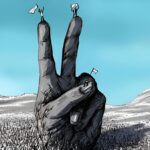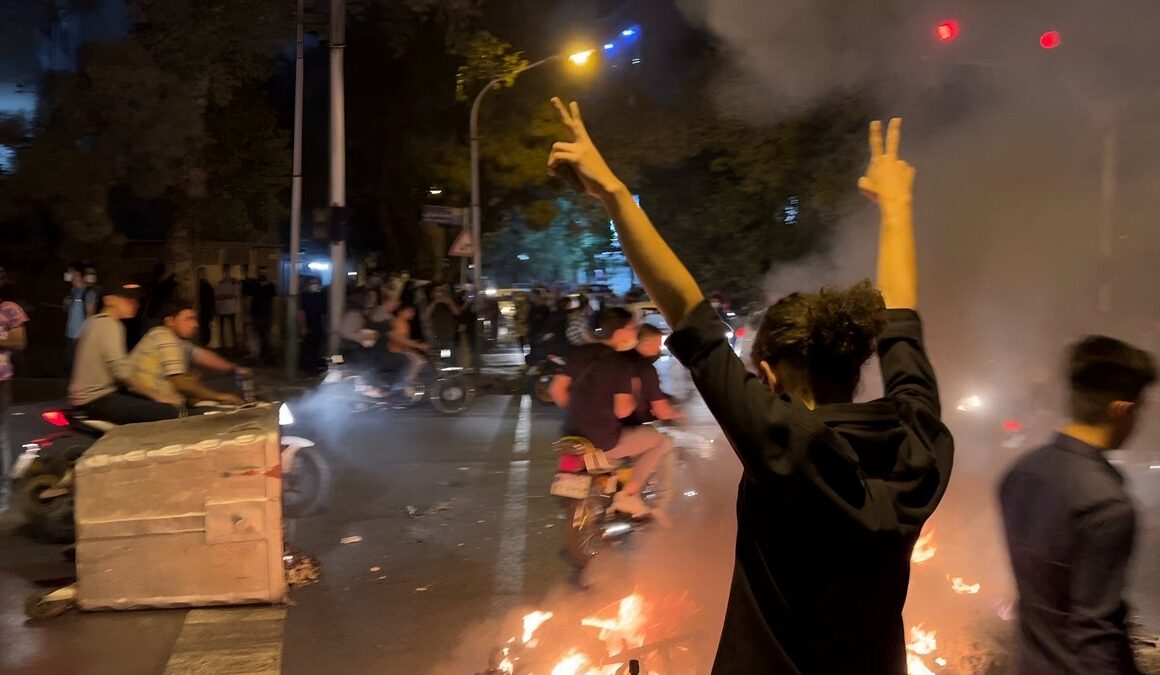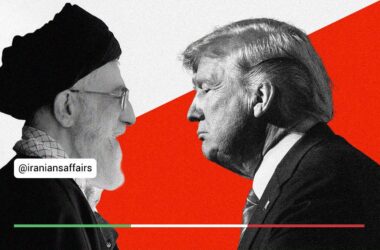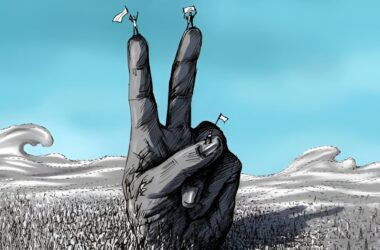Anger serves as a public manifestation of collective conscience, signaling society’s heightened sensitivity towards wrongdoings and injustices, rejecting their normalization and generalization. It seeks to curtail the perpetuation or recurrence of wrongdoings through this anger and increased awareness.
Anger distinguishes itself from violence. It represents a logical and ethical response to existing wrongdoings, an internal objection fueled by conscience against injustice. Ethical individuals experience distress and anger upon witnessing wrongdoings and immoral acts. However, those lacking ethical understanding remain indifferent.
Anger is directed towards others, whereas violence involves intentional actions against others. Anger is an internal emotional response, while violence is an external action. Violence necessitates power and essentially emerges from unaccountable and unchecked authority. Controlled expression of anger differs from deliberate acts of violence.
Non-violence applies to individuals who experience anger but refrain from resorting to violent actions. It is irrelevant for those who do not experience anger. The inclination towards non-violence is shaped by individuals’ anger experiences and their comprehension of their own power. The powerless only experience anger, not violence.
Anger’s purpose is to halt injustice (violence) or wrongdoing, and once the injustice or wrongdoing is rectified, anger subsides. With the removal of the cause of anger, it dissipates and does not transform into violence. Enforcing justice consistently prevents the continuation of anger. Justice stands as the primary means to halt violence.
Anger stems from wrongdoings (incorrect actions and behaviors) and those who commit them. Individuals are inseparable from their behavior and actions. Anger signifies directed dissatisfaction and typically replaces patience or tolerance. It aims to convey a message to others about what is unacceptable and unjust.
Typically, anger is more prevalent in unexpected circumstances, leading people to become angry about concealment, hypocrisy, and justification of crimes, lies, and violence more than the actions themselves. Anger towards a subject varies for different individuals, and a person becomes angry to varying degrees in different situations.
Patience, tolerance, and acceptance of violence contribute to its perpetuation or recurrence. Expressing sensitivity and articulating hatred and anger are usually necessary precursors to stopping violence. The issue of hating wrongdoings differs from hatred and revenge against the perpetrators. Tolerance pertains to individuals, and their behavior is intolerable.
If justice is not served for those whose errors and shortcomings cause suffering and agony among people, the people’s anger does not subside. Intimidation and suppression transform anger into violence. However, authorities believe that suppression provides an opportunity for propaganda and erases the memory and voice of the people.
In the public sphere, forgiveness and peace are impossible without the implementation of justice. Abandoning rights in society without necessary assurances is meaningless. Governmental violence is never unintentional or unconscious; it is always deliberate and usually targeted, affecting everyone with lesser intensity.
Typically, legal violence is considered legitimate violence. However, the worst violence usually involves legal sanction. In a society where the law cannot lead to justice, legal violence is not a fair form of violence. Fair violence, in this context, is violence against the law and supported formal structures.
The fairness of violence is directly related to the fairness of power. In despotic and totalitarian systems where the legitimacy of power is challenged, any government violence becomes illegitimate. Ultimately, since people form the basis of the fairness of power, only the people can determine the limits and fairness of violence.
Fair violence is violence that society can defend against in the future, compensate for, and exercise self-control over, ultimately considering enduring it a necessary suffering. Therefore, the characteristics of legitimate violence can be considered as acceptability, tolerance, and justifiability. Thus, the issue revolves around identifying these characteristics in violence.
Imagining a world without violence serves as a guide to reducing violence and must be grounded in identifying fair violence. For example, if the primary power in a society is public opinion, impactful violence in that society manifests as exposure and disgrace, turning embarrassment into punishment and justice enforcement.
In this context, expressing anger becomes a necessary form of violence for the implementation of justice, where collective thoughts and expressions are considered the common good, and justice enforcement becomes a matter of truth.
In the disgrace of all, awareness and the power of conscience enforce justice. For this, freedom and adequate thinking are essential.
The priority always lies in intolerable violence, such as murder (execution, political assassination, genocide, military and police suppression, terrorism, war, etc.), torture, child abuse, violence against children, rape, violence based on systematic discriminations, and more. However, sensitivity should extend to all forms of violence.
There are two approaches to violence: negation (elimination) of violence and repelling violence (control of legitimate violent acts). Although any reaction against others can be considered violence, typically actions like neglect, exposure, and disgrace are not categorized as violence or are seen as tolerable and justifiable.
Non-violence encompasses civil disobedience, civil resistance, passive resistance, boycott, sanctuary, strikes, protest, and social defense. Non-violence constitutes a widespread revolution and social movement. It is a collective action and lacks meaning in isolation. It represents a civic protest that is averse to discrimination and upholds individuals’ rights.
Preventing violence in a society begins with negating and limiting systemic and severe violence, then addressing other forms of violence. Essentially, preventing any violence becomes possible through combatting severe structural violence (torture and suppression), making them unjustifiable, intolerable, and unacceptable.
Since any violence is comparable to severe structural violence, and if such violence is deemed intolerable, unjustifiable, and unacceptable, then it is possible to address non-systemic and less severe violence. This is because in the presence of severe and structural violence, any other violence becomes justifiable, tolerable, and manageable.







